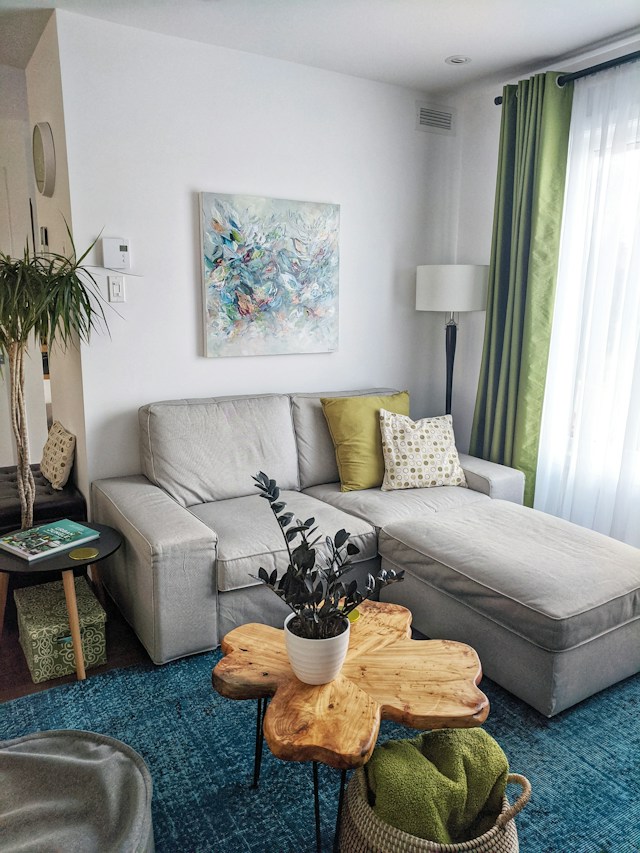In an era where space is at a premium, it’s critical to design rooms in your home that can serve multiple purposes. One such area that often gets overlooked is the guest room. Traditionally, guest rooms serve as temporary sleeping quarters for friends and family. However, these rooms often sit idle for most of the year.
Why not rethink the purpose of this space and create a design that allows it to function in a variety of ways? A guest room can transform into a fully functional home office, kids’ playroom, or even a peaceful meditation area when not serving guests. All it takes is a bit of creativity and thoughtful planning.
Cela peut vous intéresser : How Can You Design an Outdoor Yoga Platform Surrounded by Nature?
Create a Flexible Layout
When you think about your guest room, consider the area as a blank canvas. It’s not just a space for a bed and a small table. It should be an adaptable, functional room that can be tailored to various needs. The layout of the room is paramount to achieving this.
Begin by evaluating the room’s current layout, taking into account the position of windows and doors, availability of natural light, and overall space. Would the room benefit from a different layout? Could you introduce new pieces of furniture or rearrange existing ones to create a more flexible space?
Avez-vous vu cela : The best plants for the bedroom
Having a flexible office layout with a foldable desk and chair will provide a comfortable workspace. Likewise, incorporating a sofa bed instead of a traditional bed instantly makes the room more versatile, allowing it to serve as a comfortable living area during the day.
Think Storage Solutions
Storage is key in any multi-functional space. Clever storage solutions allow for a room that’s clutter-free and easy to adapt to different uses. The best storage is that which is versatile and easy to use.
Invest in furniture that incorporates storage, like beds with drawers underneath or ottomans that open to reveal hidden compartments. Use the walls for shelving to display books and personal items, which can easily be swapped out depending on the room’s current function.
If the room is small, don’t overlook the potential of vertical space. Tall, narrow shelves or wall-mounted cabinets provide ample storage without taking up too much floor area.
Incorporate Functional Lighting
Different activities require different lighting conditions. A well-designed multi-functional room will consider this and design the lighting accordingly.
For example, if the room is to be used as an office, task lighting will be essential. A reading lamp or a desk lamp would work well in this case. On the other hand, if the room is to serve as a living area, ambient lighting would be more appropriate. Consider installing a dimmer switch to easily adjust the lighting to match the mood or function of the room.
Don’t forget about natural light. If the room has a window, make the most of it. Use light, airy curtains that can be drawn back to let in as much light as possible. This not only creates a pleasant atmosphere but can help make a small room feel more spacious.
Design for Comfort and Style
Just because a room is multi-functional doesn’t mean it should lack style or comfort. The room should still feel welcoming and cozy for your guests.
Use soft furnishings like rugs, cushions, and throws to add comfort and warmth. These can be easily moved or replaced depending on the room’s usage. Choose a color scheme that’s calming and neutral, so it can easily adapt to any changes in the room’s function.
Don’t overlook the walls. Artwork, mirrors, or decorative pieces can add personality and interest to the room. Just like with the furnishings, these can be swapped out or rearranged as needed.
Make Room for Dining and Entertainment
Consider including a small dining area in your guest room. A compact table and a couple of chairs can serve as a spot for guests to enjoy a meal, use as a workspace, or play games.
If space permits, consider adding a small entertainment system. A wall-mounted TV or a projector can turn the guest room into an impromptu cinema, perfect for family movie nights.
Remember, the idea is to create a space that can adapt to various needs and occasions. With some careful planning and a bit of creativity, you can design a multi-functional guest room that’s not just a place for guests to sleep, but a versatile space that adds value to your home and enhances your lifestyle.
So, it’s time to rethink the possibilities of your guest room and start planning a design that’s as versatile and adaptable as it is welcoming and comfortable.
Select Multifunctional Furniture
Multifunctional furniture is the cornerstone of any multi-purpose space. The right furniture pieces can effortlessly adapt to the room’s different uses, making the most of your living space, without compromising comfort or style.
When choosing furniture for your guest bedroom, consider pieces that can serve multiple roles. A wall-mounted foldable table, for example, can function as a workspace, a dining room table, or a console for displaying decorative items when not in use. Similarly, a pull-out sofa bed can serve as a comfortable sitting area during the day and transform into a cozy bed for guests at night.
Investing in a multifunctional cabinet combo that can function as a wardrobe, bookshelf, and storage unit is another great option. It not only provides ample storage solutions and helps keep the room clutter-free, but also adds an element of interior design to the room.
Also, opt for lightweight, easy-to-move furniture. This will allow you to quickly and easily rearrange the room layout to accommodate different uses. Remember, the key is to choose functional and versatile furniture that complements the room’s style and fits seamlessly with the rest of your home decor.
Utilize Vertical Space
A common issue many homeowners face while designing a multi-functional room is the lack of floor space. However, this should not limit your design. Vertical space is often overlooked, but it offers ample opportunity to create a multi-purpose, space-saving environment.
Think of ways you can utilize the height of the room. Floating shelves, wall-mounted desks, and tall bookcases are functional and stylish solutions that can help maximize your living space.
Install a wall-mounted TV for entertainment purposes. This would not only save floor space, but also provide an excellent viewing experience for family movie nights or when the room is used as a living room.
Also, consider hanging plants or artwork. These can add character and life to the room without taking up any floor space. Remember, clever use of vertical space can make even the smallest guest room feel spacious and inviting, while ensuring it meets your various needs and occasions.
Conclusion
Creating a multi-functional guest room is all about smart planning and creative thinking. By choosing the right layout, investing in multifunctional furniture, and utilizing clever storage solutions, you can design a room that adapts to various needs and occasions, while remaining stylish and comfortable.
Use the full potential of every inch of the room, whether it’s the floor, wall, or height. From a productivity-boosting home office to a fun-filled children’s playroom, a serene meditation area, or a cozy guest bedroom; with a bit of creativity and thought, your guest room can truly become the most versatile space in your home.
Remember, the ultimate goal is to create a welcoming and comfortable space for your guests. Therefore, don’t forget to add personal touches and elements of comfort that make the room feel inviting.
In the end, the image credit goes to you for creating a guest room that not only accommodates guests but also doubles as a functional living space that enhances your lifestyle and adds value to your home. So, roll up your sleeves and start transforming your guest room into a multi-functional haven.











